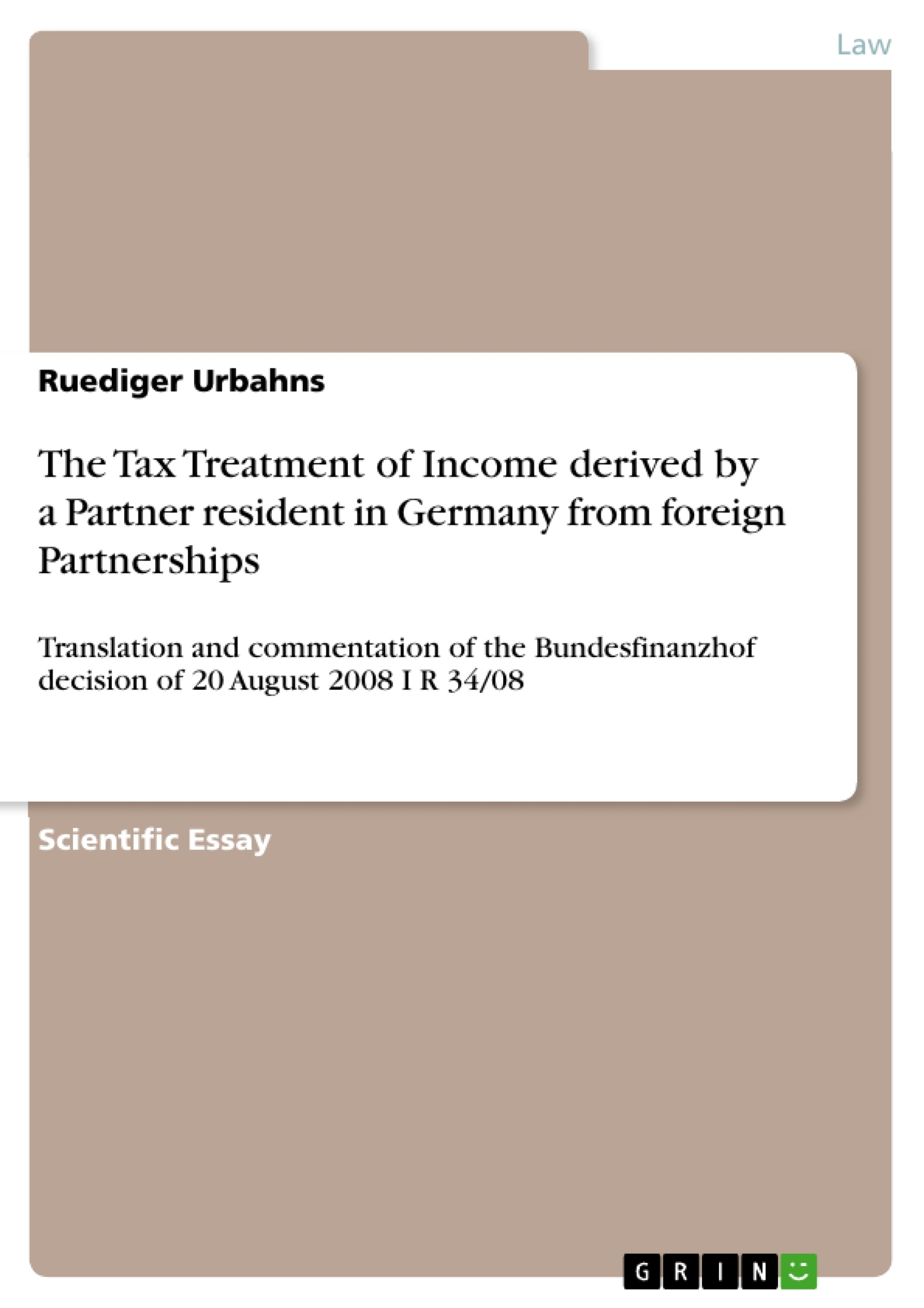Translation and commentation of the German Federal Tax Court (Bundesfinanzhof) Decision of 20 August 2008 regarding the classification of an US-LLC (US Limited Liability Company) and introduction into the so called ‘analogy comparison’ (Typenvergleich) for the classification of foreign companies for German tax purposes(German/English version).
The intention of this short compendium is to provide the international tax expert community respectively (tax) managers dealing with international (partnership) cases with a first familiarization with the concept of foreign company classification for German tax purposes based on a so called ‘analogy comparison’ (Typenvergleich). For this purpose the Bundesfinanzhof decision of 20 August 2008 – regarding the classification of an US-LLC - shall serve as an example and is thus translated and commented in this sense.
Inhaltsverzeichnis (Table of Contents)
- Preface
- Einführung (Introduction)
- Bundesfinanzhof-Entscheidung (Federal Tax Court-Decision)
- Tenor
- Summary of Judgement
- Gründe (Reasons)
- Tatsachen (Facts and Circumstances)
- Anmerkung Autor (1) (Remark Author (1))
- Begründung (Opinion and Reasoning)
- Anmerkung Autor (2) (Remarks Author (2))
- Zentralisierte Geschäftsführung und Vertretung (Centralized Management and Representation)
- Beschränkte Haftung (Limited Liability)
- Freie Übertragbarkeit der Anteile (Free Transferability of the Shares)
- Gewinnzuteilung (Profit Allocation)
- Kapitalaufbringung (Capital Creation)
- Unbegrenzte Lebensdauer der Gesellschaft (Unlimited Term of the Company)
- Gewinnverteilung (Distribution of Profits)
- Formale Gründungsvoraussetzungen (Formal Conditions of Establishment)
- Sonstige Kriterien (Other Criteria)
- Abschließende Anmerkung Autor (3) (Final Remark Author (3))
Zielsetzung und Themenschwerpunkte (Objectives and Key Themes)
This compendium aims to familiarize international tax experts and managers with the classification of foreign companies for German tax purposes, focusing on the "analogy comparison" method (Typenvergleich). It uses a translated and commented Federal Tax Court decision (Bundesfinanzhof) of August 20, 2008, concerning the classification of a US LLC, as a case study.
- Classification of foreign companies for German tax purposes
- The "analogy comparison" (Typenvergleich) method
- Tax treatment of income from foreign partnerships for German resident partners
- Analysis of the legal characteristics of a US LLC
- Application of German tax law to international partnerships
Zusammenfassung der Kapitel (Chapter Summaries)
The Preface explains the author's motivation for creating this compendium, highlighting the difficulties faced when dealing with cross-border tax cases. The Introduction sets the stage for the analysis by introducing the concept of foreign company classification within the German tax system. The main body focuses on the Bundesfinanzhof decision of August 20, 2008, providing a translation and commentary. This section dissects the court's reasoning, examining various criteria, including centralized management, limited liability, and profit allocation, to determine the appropriate tax classification of the US LLC. The analysis incorporates the author's remarks, offering further insights and explanations.
Schlüsselwörter (Keywords)
German tax law, international taxation, foreign company classification, analogy comparison (Typenvergleich), US LLC, partnership taxation, Bundesfinanzhof, cross-border taxation, profit allocation, limited liability.
- Citar trabajo
- Dipl. Finanzwirt (FH), MITax, Steuerberater Ruediger Urbahns (Autor), 2008, The Tax Treatment of Income derived by a Partner resident in Germany from foreign Partnerships, Múnich, GRIN Verlag, https://www.grin.com/document/120360



